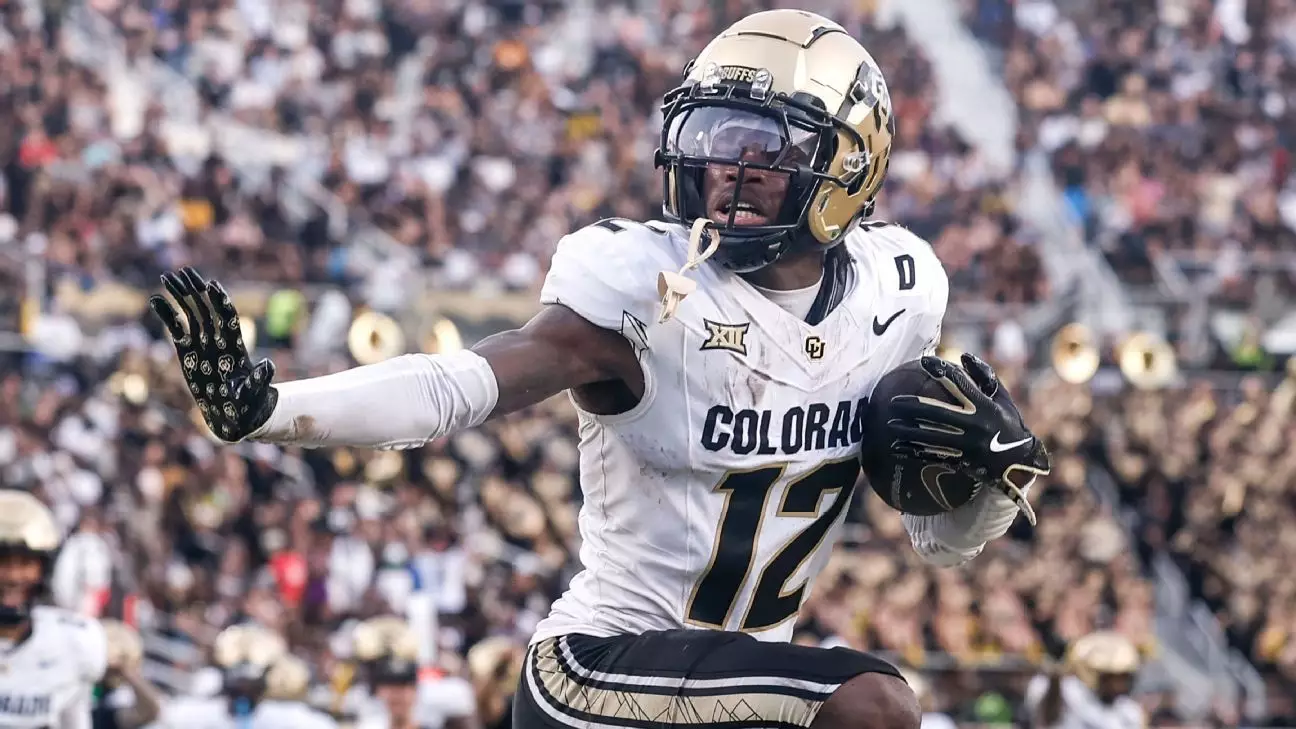As the NFL draft draws near, the spotlight is shining brightly on a particular name in collegiate football: Travis Hunter. This versatile athlete, who made waves playing for Colorado, is not just a standout cornerback but also a dynamic wide receiver, hoping to be drafted third overall by the New York Giants. The significance of Hunter’s dual-threat capability cannot be understated; he embodies the evolution of football players in a league that increasingly values versatility and adaptability.
Hunter’s aspiration to excel in both cornerback and wide receiver roles at the professional level reflects not only his incredible talent but also a drive to redefine what it means to be a player in today’s football arena. General Manager Joe Schoen has expressed willingness to explore this uncharted territory, stating that the Giants would not shy away from maximizing Hunter’s abilities on both sides of the ball, making him an intriguing prospect in a league often resistant to such experimental approaches.
The Pressure of Expectations
Travis Hunter has made it abundantly clear that he does not want to be pigeonholed into a single position. His comments regarding the potential disappointment of being limited to one role paint a picture of a player deeply in love with the game. “It’s never playing football again,” he declared, signaling that his identity is entwined with being able to contribute wherever necessary. This commitment to duality could be a double-edged sword, though. The physical toll and mental complexity of balancing both offensive and defensive duties at the NFL level cannot be overlooked.
Schoen has indicated awareness of the significant learning curve that awaits Hunter in the pros, where the offense is more intricate and defenses adjust weekly based on complex matchups. The underlying question is whether Hunter can handle this dual role while still meeting the demands of a demanding professional environment. The idea of a two-way player has been nearly dormant in the modern era of the NFL, where specialization reigns supreme.
The Giants’ Strategic Positioning
The Giants find themselves in a unique strategic position with the third overall pick. They are not in dire need of a quarterback, having an ensemble including Russell Wilson, Jameis Winston, and Tommy DeVito. This advantageous standing allows the Giants to focus on improving their roster without feeling the pressure to fill an obvious gap under center. They can entertain the possibility of selecting a player like Hunter—one who could redefine the trajectory of their offense and defense alike.
The NFL draft environment is charged with unpredictability; Hunter is also in the conversation for the second overall pick by the Cleveland Browns. If he is available, the Giants must carefully weigh whether acquiring an athlete of Hunter’s caliber justifies skipping over a quarterback prospect like Shedeur Sanders, Hunter’s college teammate who has garnered considerable attention. Schoen emphasizes that they will not force a risky decision simply to fulfill a need at quarterback, asserting that a blue-chip talent must be prioritized if available.
The Future of Multi-Positional Players
Hunter represents a potential shift in how players can be utilized in the NFL. The dual-threat model could set a precedent for future generations, encouraging coaches to embrace versatility rather than adherence to strictly defined roles. If Hunter succeeds in his grand vision of playing both cornerback and wide receiver, he may pave the way for other athletes to flourish in multiple capacities, thereby transforming how teams construct their rosters and schemes.
Hunter’s rigorous workload in college—averaging an astronomical 86% of snaps played—highlights his endurance and resilience. As the league evolves, Hunter’s case will serve as a litmus test for whether adaptability can coexist with specialization. The Giants seem cautiously optimistic, understanding that if anyone can achieve this ambitious feat, it might just be a talent like Hunter, who combines unparalleled athleticism with an unyielding passion for the game.
This dynamic outlook not only hints at a bright future for Hunter but could also usher in a new era of football strategy, making it a fascinating focal point for analysts, coaches, and fans alike as the NFL draft approaches, signaling potential transformations that may impact the league for years to come.

